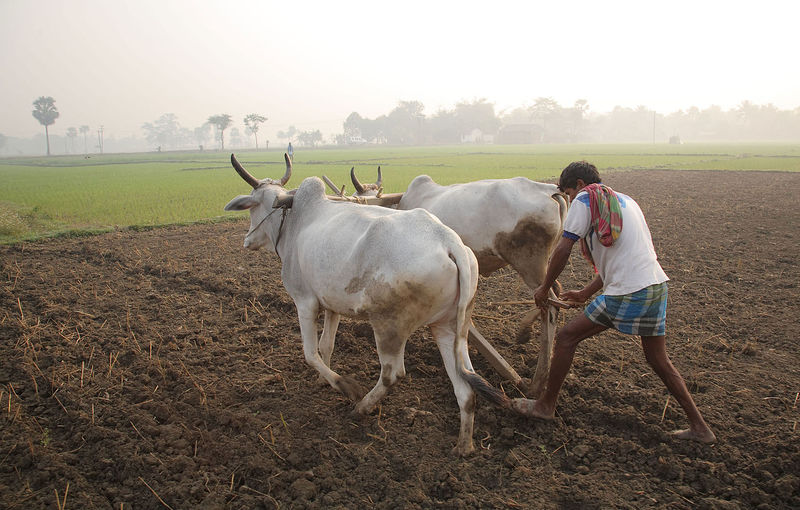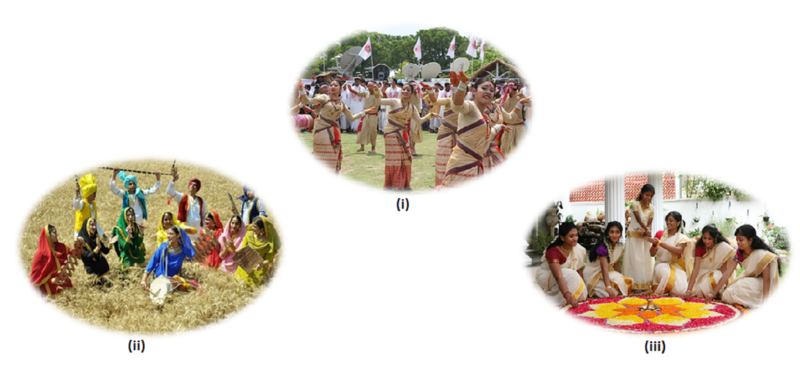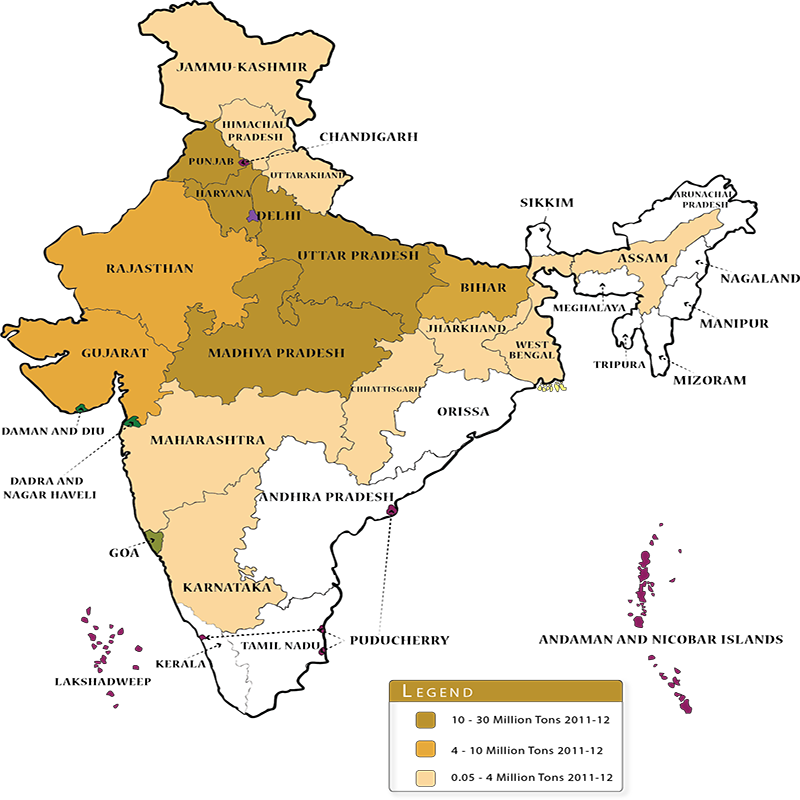8th Grade > Biology
CROP PRODUCTION AND MANAGEMENT MCQs
Total Questions : 51
| Page 3 of 6 pages
Answer: Option B. -> Combine
:
B
Cutting of the crop close to the ground after it matures is called harvesting. Farmers with small farms harvest their crops manually using tools like a sickle. However, after harvesting, they need to manually undertake threshing and winnowing. Whereas, farmers with huge farms cannot deploy manual labour for harvesting and threshing as it is more time consuming. Instead, it is more efficient for them to use machines such as a combine. A combine performs the function of both harvester as well as thresher. This saves a lot of time and manual labour.
:
B
Cutting of the crop close to the ground after it matures is called harvesting. Farmers with small farms harvest their crops manually using tools like a sickle. However, after harvesting, they need to manually undertake threshing and winnowing. Whereas, farmers with huge farms cannot deploy manual labour for harvesting and threshing as it is more time consuming. Instead, it is more efficient for them to use machines such as a combine. A combine performs the function of both harvester as well as thresher. This saves a lot of time and manual labour.
Answer: Option B. ->
Aids growth of earthworms and microorganisms
:
A, B, and D
The process of loosening or turning the soil is called tilling or ploughing. It is one of the basic steps followed before a crop is sown.
Advantages of the process are:
∙ Loosened soil is more aerated and allows the roots of plants to penetrate deeper.
∙ It aids the survival of earthworms and microorganisms which add nutrient-rich humus to the top soil.
∙ It brings underlying nutrient rich soil to the top for plant usage.
:
A, B, and D
The process of loosening or turning the soil is called tilling or ploughing. It is one of the basic steps followed before a crop is sown.
Advantages of the process are:
∙ Loosened soil is more aerated and allows the roots of plants to penetrate deeper.
∙ It aids the survival of earthworms and microorganisms which add nutrient-rich humus to the top soil.
∙ It brings underlying nutrient rich soil to the top for plant usage.
Answer: Option B. ->
Protection from hot currents
:
A, B, and C
Water is essential for plant growth. All nutrients absorbed by the roots are dissolved in water, which are then transported to different parts of the plant. Due to important physical properties of water, it protects plants from hot currents as well as from frost.
:
A, B, and C
Water is essential for plant growth. All nutrients absorbed by the roots are dissolved in water, which are then transported to different parts of the plant. Due to important physical properties of water, it protects plants from hot currents as well as from frost.
Answer: Option B. ->
(i) Assam, (ii) Punjab, (iii) Kerala
:
B
:
B
A harvest festival is an annual celebration which occurs around the time of the main harvest of a given region. Bihu, the national festival of Assam is celebrated three times in the year, Maagh in January, Bohaag in April and Kaati in October. Onam is the grand carnival of Kerala, celebrated sometime between August and September. Baisakhi is the major festival celebrated in the northern region of India, especially in Punjab. It is celebrated as the Indian thanksgiving day by farmers of Punjab, praying for future prosperity and thanking God for harvest.
Answer: Option C. ->
drip system
:
C
Irrigation is the process by which water is supplied to the crops at regular intervals, for agriculture. The traditional methods of irrigation include moat, chain pump, dhekli and rahat (lever system). Modern methods refers to the usage of sprinklers and drip system of irrigation.
:
C
Irrigation is the process by which water is supplied to the crops at regular intervals, for agriculture. The traditional methods of irrigation include moat, chain pump, dhekli and rahat (lever system). Modern methods refers to the usage of sprinklers and drip system of irrigation.
Answer: Option B. ->
False
:
B
Weedicides are chemicals that are sprayed in the fields to control weeds. Their usage should be greatly monitored and limited as they are not only poisonous to the plants but also to the farmers spraying these chemicals. Overuse of weedicides might cause these chemicals to enter the food chain and adversely affect many organisms.
:
B
Weedicides are chemicals that are sprayed in the fields to control weeds. Their usage should be greatly monitored and limited as they are not only poisonous to the plants but also to the farmers spraying these chemicals. Overuse of weedicides might cause these chemicals to enter the food chain and adversely affect many organisms.
Answer: Option A. ->
True
:
A
Crop rotation is a method of growing different crops alternately. This method improves soil quality, reduces risk of erosion and can also enhance soil fertility. Leguminous plants have a bacteria called Rhizobium which helps in fixing atmospheric nitrogen.
:
A
Crop rotation is a method of growing different crops alternately. This method improves soil quality, reduces risk of erosion and can also enhance soil fertility. Leguminous plants have a bacteria called Rhizobium which helps in fixing atmospheric nitrogen.
Answer: Option A. ->
Seeds are sown at proper depth
:
A, B, C, and D
A seed drill is a sowing device that sows the seeds at equal distances apart from each other and at a proper depth, ensuring that the seeds get covered with enough soil and are protected from being eaten by birds. Seed drills also aid in removing weeds at the sowing stage itself.
:
A, B, C, and D
A seed drill is a sowing device that sows the seeds at equal distances apart from each other and at a proper depth, ensuring that the seeds get covered with enough soil and are protected from being eaten by birds. Seed drills also aid in removing weeds at the sowing stage itself.
Answer: Option B. ->
True
:
B
Once harvested, grains are stored by farmers in jute bags and metallic bins. Large scale storage of grains is done in silos and granaries.
:
B
Once harvested, grains are stored by farmers in jute bags and metallic bins. Large scale storage of grains is done in silos and granaries.



















